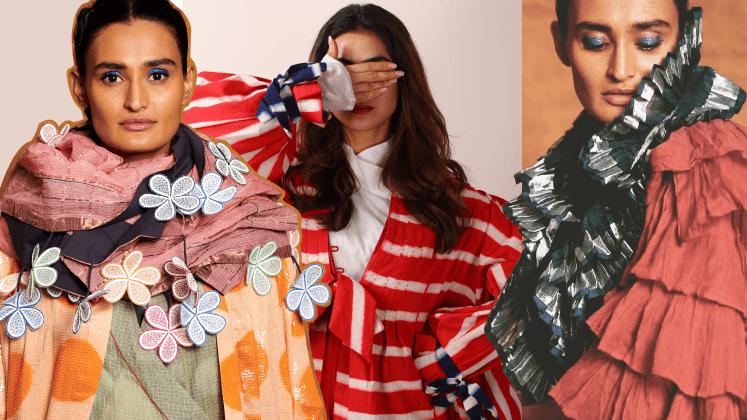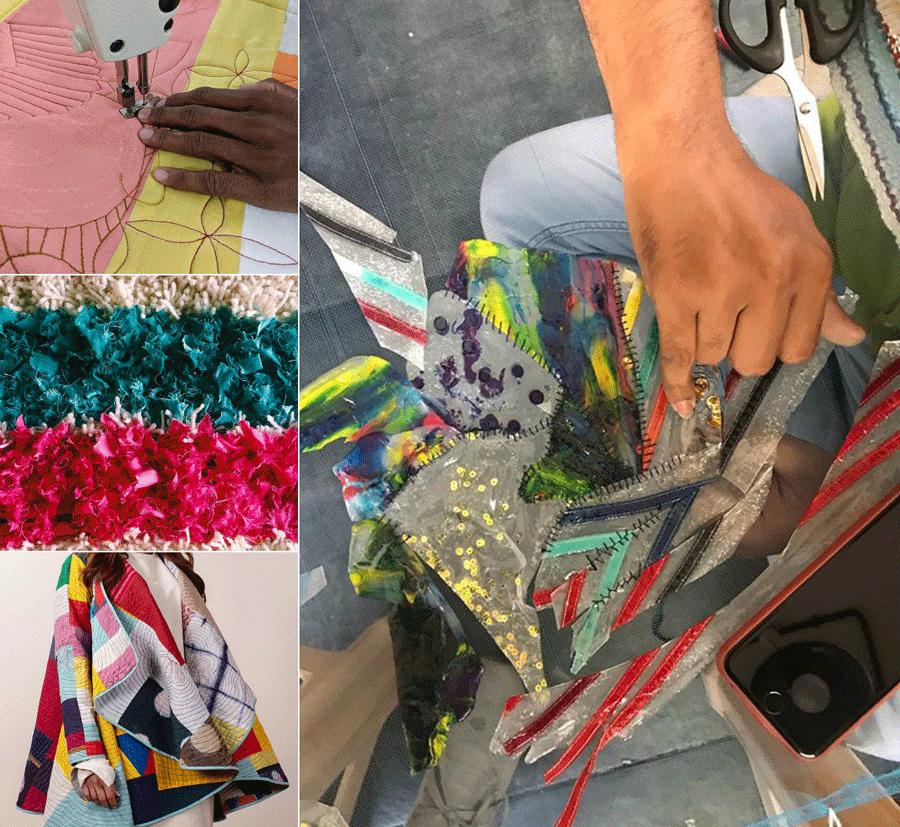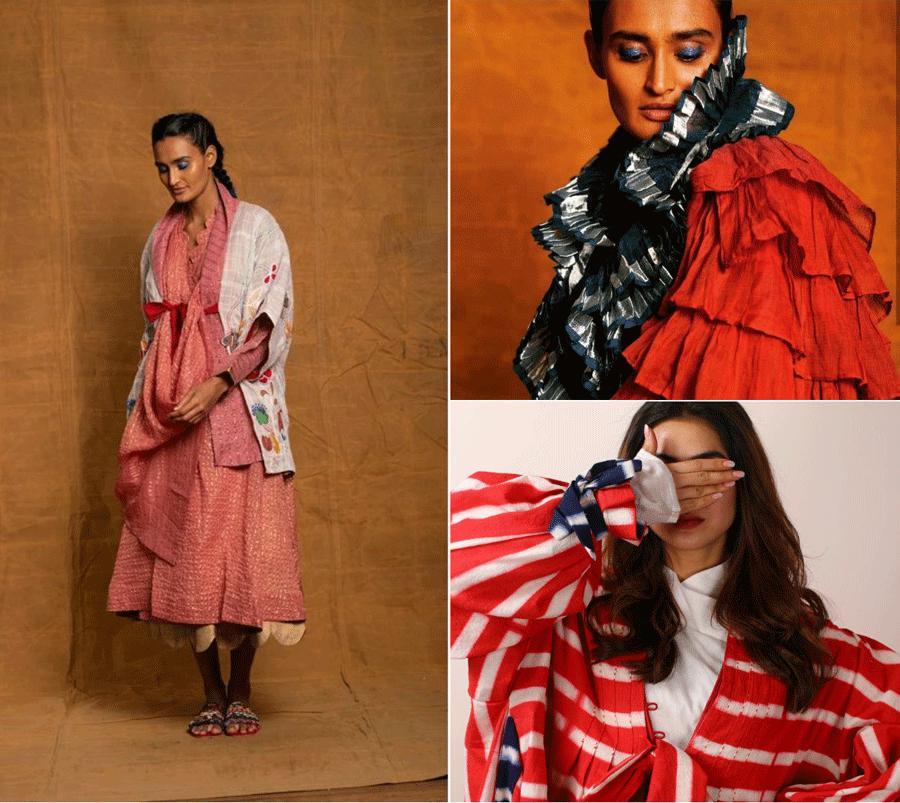
Fashion is a lot more than what a consumer wears, carries or displays, as it intersects the people and processes that go into the making of the finished apparel. The threat the fashion industry poses over the environment in general is a subject that has been talked and debated over again and again, diluting the grave meaning the word ‘sustainability’ holds. Apparel Online gets an opportunity to have a candid interaction with Karishma Shahani, a visionary who has her own meaning of sustainable fashion, which she is translating successfully through her label Ka-Sha India, a label that thrives on being deeply rooted in India while constantly collaborating with several clusters and companies to profit the people and products of the supply chain.
“If this story features me, I would prefer that you don’t use the word ‘sustainable’, as I would rather use the word ‘conscious’ because the word ‘sustainable’ has been so overused that the very understanding of it has become shallow. The word is limited to the raw material and processes for many people who claim they practise sustainability, and that needs to change. It should be about the people as well,” emphasised Karishma, right before talking about Ka-Sha India, which started operations in 2012.
A graduate from London College of Fashion, Karishma was always interested in exploring ways to utilise and procure materials consciously, while understanding how to relate sustainability to textiles or beyond that, how people are treated and how things are done within the organisation. Her experience as an intern in different roles coupled with her background of belonging to a family of freedom fighters with high respect for education and Indian heritage; she therefore shifted her focus towards crafts and ethical fashion for her label. She averred, “I’ve worked in production, buying houses, fashion houses and even with costume designers, before ultimately landing up in Marleshwar (Maharashtra), where I worked on a project with a local organisation that is run by a person who isn’t Indian. It aimed at women empowerment by teaching women certain skills in fashion, and I taught them about design and its different aspects. We travelled a lot for sourcing in south India for natural dye development and production and the entire process inspired me to open KaSha, as I wanted to teach people like these. Education is crucial to make these artisans and workers value sustainability, and this is where KaSha comes from.”

COLLABORATION FOR CONSCIOUS FASHION
The label rose to popularity due to a product range that oozes of unique Indian techniques juxtaposed over silhouettes that balance detailing with comfort. This uniqueness of the assortment owes to the constant collaborations and projects Ka-Sha employs for its raw materials and finished products, as Karishma zealously works towards educating artisans and pushing them towards ethical fashion. “My work at LCF fetched me several opportunities and prospective collaboration options and I source and manufacture products with many artisans, clusters and NGOs. We designers keep thinking we are saving these artisans by using their products and working with a craft, but technically they are the ones who have the skills and we are just harnessing those skills,” she added.
Ka-Sha’s most recent collaboration was with ‘Save the Loom’, where clothing made using fabric from the Chadamangalam Weavers’ Association (Kerala), was utilised in a bid to promote textiles and the organisation that saw a lot of loss of property and livelihood post the floods that severely affected Kerala in 2018. The label also made its retail foray through a design collaboration with Aditya Birla Group-owned Liva Creme and Haute Curry (Shoppers Stop) for a capsule that was developed and retailed at Shoppers Stop, India Nationwide. In order to promote khadi fabric in Dhaka (Bangladesh), the label worked with Khadi and Fashion Design Council of Bangladesh for a range developed and showcased at Khadi: Future Fabric Show. Their work with Kota Doria Women Weavers Association was lauded at Lakmé Fashion Week as well.

Karishma then goes on to explain about how she explores several such clusters for small capsules that roll out throughout the year. According to her, “We don’t buy our fabrics from stores, owing to the love and respect I have for the craft; we buy our fabrics from the source directly, so we physically meet or visit several artisans, textile makers, brands and retailers and let them work there. I am the one doing the travelling as I believe that displacement is not the way forward. People should be where they are supposed to be and so should the craft. This is like a system that has been created to support all of these artisans.”
UPCYCLING AT ITS BEST
Ka-Sha champions sustainability on a larger picture, but one major aspect of its functioning comes from upcycling and waste management. It not only incorporates materials that are recycled or repurposed, but also urges other designers and fashion houses for the same. It even launched Heart To Haat, a socially responsible initiative to work with old/discarded clothing to reinvent and upcycle into usable products – lifestyle and clothing, while educating and spreading awareness on sustainability.
“We approach people by saying that if you have waste and you don’t know what to do with it, we will help you resolve it. With Heart To Haat, we want to try and build a circular system where whatever we create, whatever we waste, goes back in the product. We have been doing it consistently in our collection but now we feel like art has a life of its own because it’s a lot more as a functional product. I really believe that designers are about collaborations too, so I want to use art to create fashion.”
One of Ka-Sha’s earliest collaborations was with Para, a London-based NGO that dealt with Banarasi Weavers from Bangladesh, and it started off with the aim of exploring new dimensions of the fabric weaving techniques of the Banarasi fabric. Talking about her upcycling venture, Karishma stated, “India might not have a huge market for second-hand sarees but we found a way to reengineer one part of the garment that enthralled masses for very long – the border. We stumbled upon markets where tonnes of old saree borders are actually available, and we started processing those borders for our collection. We furthered our horizons by exploring several alternate materials such as using onion sacs to create textiles.”
WHAT LIES AHEAD…
Karishma has a strong outlook when it comes to the role of education in spreading awareness about sustainability, and along with her husband, she conducts workshops at several colleges to change the mindsets of young designers in the initial stages. After leaving a footprint of Ka-Sha globally at the biggest shows such as Lakmé Fashion Week (Mumbai), Amazon India Fashion Week – FDCI (Delhi), TRANOI (Paris), Who’s Next (Paris), South Africa Fashion Week (Johannesburg), Kuala Lumpur Fashion Week (Malaysia), London Design Festival (London) etc., Karishma is modest about the successful journey she has had in a short period of time but is headstrong about her plans for the future that will be devoted to changing the fashion industry for better.
She shared her plans for the road ahead saying, “It has only just started but we hope to travel the distance, bridging gaps, telling stories, building relationships and collaborating to create a truly global Indian brand for our global surroundings, a brand with love from India to the world. An organisation built on our inherent value system from uplifting the lives of all those associated with it to reusing, reforming and inheriting like we do to pass it on through generations.”

Post a Comment